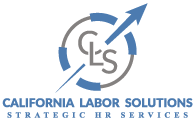Bullying behavior in the workplace can have multiple serious repercussions for targets and witnesses, such as depression, burnout, and even symptoms associated with Post-Traumatic Stress Disorder (PTSD).
In addition, according to the Association of Workplace Investigators, organizations where employees report bullying behavior often show a reduction in the employees’ work quality and productivity and decreased employee collaboration, safety, loyalty, and retention.
Therefore, external California-licensed investigators are often hired to investigate the alleged bullying behavior, and the HR personnel, trainers, and coaches are asked to in implementing corrective actions. However, unlike workplace harassment and discrimination, bullying behavior is not legally prohibited, and there is less guidance for determining whether it occurred and the corrective action an organization can implement.
As many California employers lack the expertise to address bullying behavior in the workplace effectively, this article outlines the definition of bullying behavior and how to categorize bullying behavior in the workplace.
Definition of Bullying in the Workplace

To investigate workplace bullying effectively, it is necessary to define and identify it accurately. Despite the absence of a universally accepted definition, the following concepts consistently appear in academic discussions.
Workplace bullying is a repeated and ongoing behavior characterized by:
- Abusive conduct that fosters an intimidating atmosphere at work;
- Psychological or physical harm to targets and witnesses; and
- Psychological power imbalance between the perpetrator, targets, and witnesses.
California law also uses malice in legal definitions of bullying or abusive conduct in the workplace.
As an employer, it is important to be aware of any form of psychological power imbalance between the perpetrator and organizational leadership. For instance, if the perpetrator is perceived as important for the organization, in terms of profitability or efficiency, leadership may fear that by calling them out, they and their ability to get results will leave; this may encourage perpetrators to continue their bullying behavior.
Categories of Bullying Behavior in the Workplace
According to research surveys related to toxic behavior, bullying behaviors can occur in person or online and may be verbal or nonverbal.
Bullying behavior in the workplace can be categorized into one of the following three categories:
- Aggressive communication: including insults, offensive remarks, snide comments, angry outbursts, aggressive gestures, yelling, and getting in another team member’s personal space.
- Humiliation: including ridiculing, spreading rumors or gossip, publicly highlighting mistakes, bringing up past mistakes that have been corrected, and blaming others for problems that are not their fault or within their control.
- Manipulating work: includes not being clear on how a team member will be successful and/or measured, giving unmanageable workloads or impossible deadlines, confusing workloads by frequently changing tasks, hiding tools, instructions, or documents, using employee evaluations or disciplinary procedures to inaccurately claim poor performance, and claiming poor performance without offering useful feedback or training.
Most workplace bullying involves a combination of two or more of these categories. For example, a person engaging in sarcastic remarks alone may not be considered a bully. However, such behavior may be considered bullying when the sarcastic remarks are coupled with insults, aggressive body language, and impossible workloads.
Why choose California Labor Solutions?
California Labor Solutions (CLS) is one of the only HR firms licensed* to conduct workplace investigations in California. We serve private businesses and public-sector organizations throughout the state. We have conducted hundreds of neutral, objective, and unbiased workplace investigations for employee complaints relating to allegations of discrimination, harassment, retaliation, and various types of employee misconduct with the utmost quality, detail, and efficiency.
*California Private Investigator License Number 26311.
Disclaimer:
Please note that the updates, advisories, and regulations that we receive from the promulgating agency often contain ambiguities and/or are often amended, modified, or updated. This material/article/email does not contain any legal advice. The information and opinions expressed herein are based on our reasonable interpretation of the issuing agency’s publication at the time the opinion is expressed and is therefore subject to change based on further developments. The effect of the opinions expressed may be different based on your particular circumstances, and it is recommended that you not rely upon these general opinions prior to obtaining a consultation with your legal and/or financial advisors.


